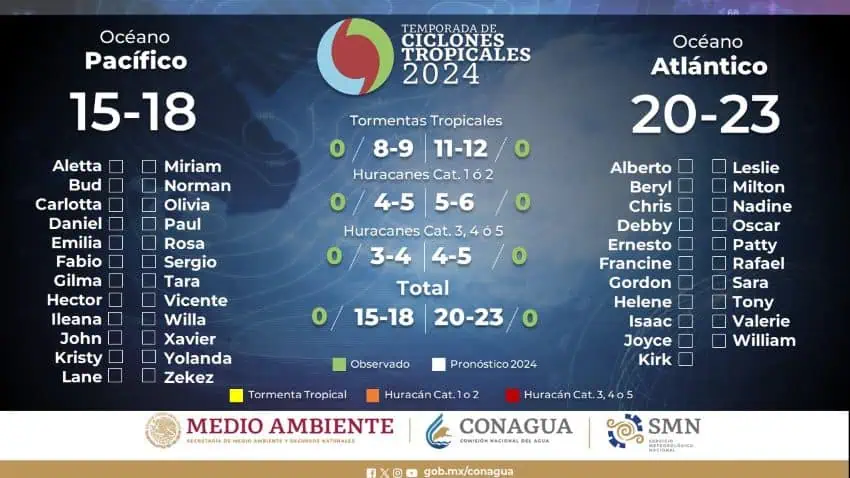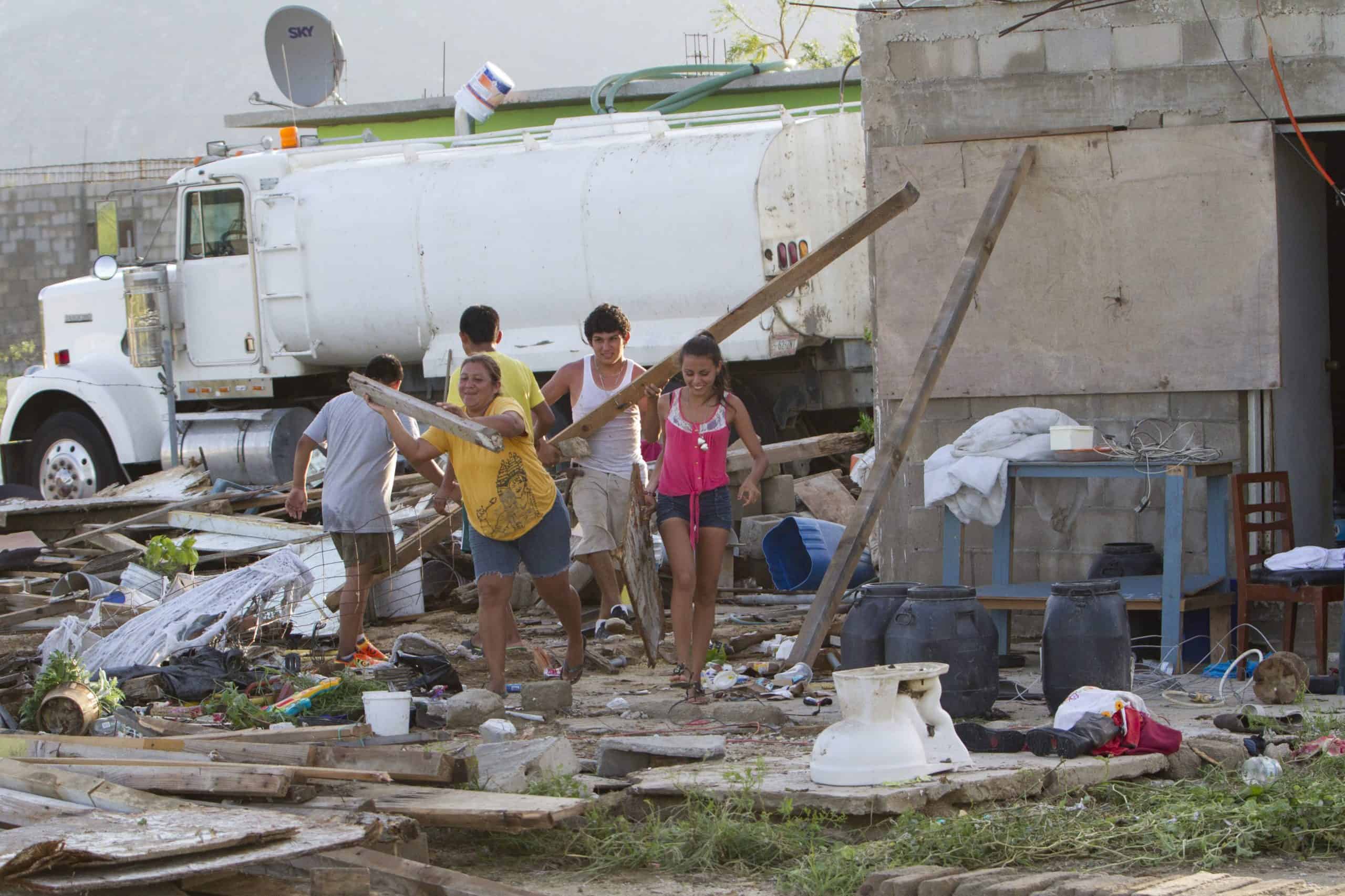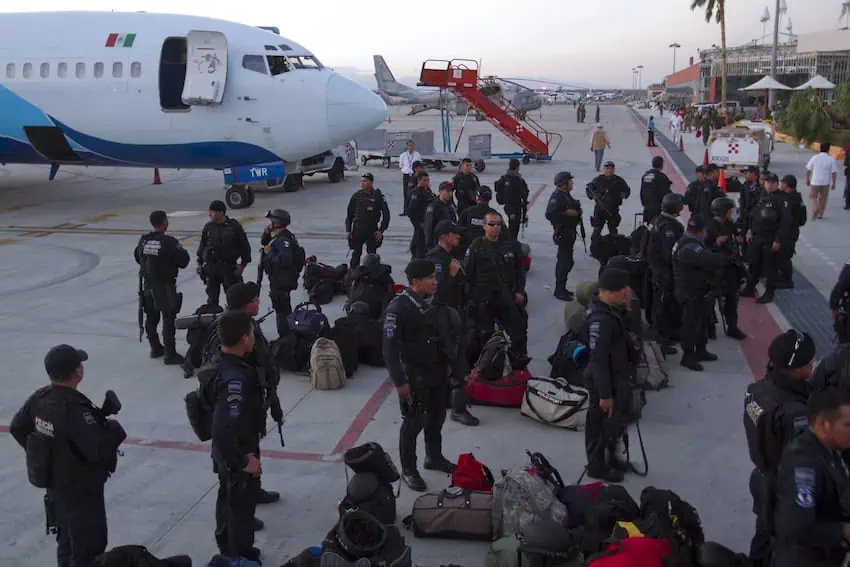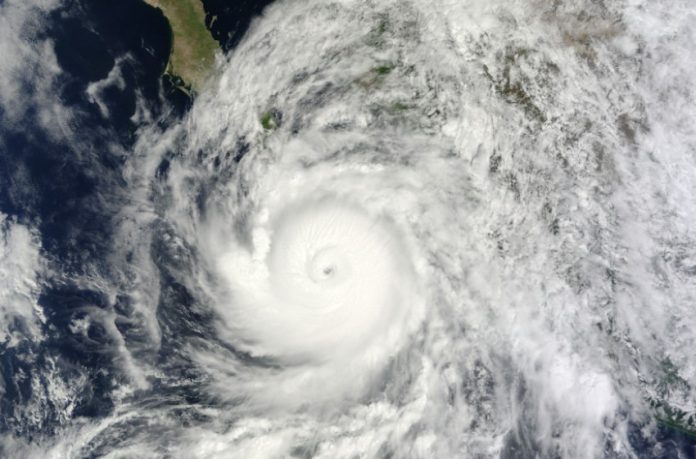It’s fair to say Los Cabos locals spend a lot more time thinking about hurricane season than do vacationers. The former, after all, must consider the prospects of property damage and extended power outages. These aren’t concerns for visitors. Los Cabos’ hotels are the safest structures in the destination and their generators are larger and longer-lasting than those of the most prepared residents. But that doesn’t mean hurricane season shouldn’t factor into vacation planning. Los Cabos is expensive, even with off-season discounts, and if there’s no sunshine and the beaches and marinas are closed for a few days, that will likely impact your overall experience.
When is hurricane season in Los Cabos?
Pacific hurricane season begins on May 15 and annually extends through the end of November. That’s almost half the year, but it bears noting that tropical storms are uncommon in all but three months: August, September, and October. Hurricanes – storms with wind speeds over 74 miles per hour – are even rarer.

According to Mexico’s Servicio Meteorológico Nacional, the Pacific Ocean is projected to see 15 to 18 named storms this year, of which 4 or 5 may reach hurricane strength, with 3 to 4 achieving major hurricane status (Categories 3, 4, and 5; with wind speeds 111 mph and higher). However, that’s for the entire Pacific region. It’s not guaranteed that any of these potential storms will affect Los Cabos, although traditionally, at least one or two will.
What is the history of hurricanes in Los Cabos?
From a historical perspective, almost all of the most powerful storms ever to hit Los Cabos happened during September. La Inundación de 1939 and Hurricane Odile in 2014 occurred on the same day: September 14. Flooding from the former destroyed the few homes then built in Cabo San Lucas, an event memorably described in C.M. Mayo’s travelogue Miraculous Air: Journey of a Thousand Miles Through Baja California, the Other Mexico. The latter was the worst storm ever to hit Los Cabos, a Category 4 hurricane that caused more than a billion dollars in damage.
Other noteworthy storms like Hurricane Liza in 1976 and Hurricane Paul in 1982 were also in September. In more recent years Hurricane Juliette in 2001 and Tropical Storm Lidia in 2017 took place the same month. Thus, this is the one month when vacationers should expect tropical storms to be a distinct possibility. This is borne out by average rainfall amounts in September (127 millimeters, or 5 inches), which accounts for over 44% of the average annual rainfall in Cabo San Lucas.
Storms in August and October are much less frequent but do happen. Just last year, for example, Hurricane Norma made landfall in Los Cabos on the late date of October 21, knocking out power for many residents for the better part of a week. But there’s a reason that Cabo San Lucas’ biggest fishing tournaments are held in October. Not only are the conditions right to catch marlin, but the weather is typically hot and sunny.

How do potential storms affect hotels, beaches, and activities?
In the rare event of a hurricane or strong tropical storm, several wrenches can be thrown into one’s vacation plans. The first is that the beaches can be closed, eliminating one of the most popular vacation activities. Not that you’d want to go anyway in such poor weather. The second is that the Cabo San Lucas Marina can be closed. As this is the locus of most area sailing, snorkeling, and fishing tours, these activities are likewise curtailed. For those taking Mexican Riviera Cruises with port calls in Cabo San Lucas, this could mean cancellation of one’s scheduled visit. Many outdoor restaurants will close, too, and the streets will probably also flood, as they almost always do during heavy rains since Los Cabos lacks adequate drainage.
Los Cabos International Airport may also close until the weather clears. At the very least, some flights could be canceled. If your flight is one of those nixed, there could be a monetary loss, which is why some visitors buy an international traveler’s insurance policy.
Is travel insurance recommended?
Travel insurance generally covers money lost from missed flights and misplaced luggage. It may be a good investment if you’re visiting during September when storms are most likely. Signing up for the Smart Traveler Enrollment Program, meanwhile, is always recommended during hurricane season in Los Cabos. It’s free and lets you share your trip details with the U.S. Embassy. In return, you’ll get updates on safety and potential weather advisories or other emergencies.
You’ll want to activate international roaming for your cellphone before traveling so that in the event of a hurricane, you can tell friends and family that you’re safe and having a more adventurous vacation than you bargained for. You won’t need the same emergency kit assembled by residents, but a waterproof bag to protect passports and other travel documents is a good idea. Your hotel or resort will take good care of you, with generator service in the event of power outages and Wi-Fi to post social media updates.

There’s a U.S. Consulate office in Los Cabos, at The Shoppes at Palmilla, an upscale shopping center at Km. 27.5 in the Tourist Corridor. If you have questions during your trip, contact them at (624) 143-3566, or after business hours call 1-800-681-9374. To report an emergency, dial 911, like you would in the U.S.
Is it worth the risk to visit in September?
Although September is the only month when tropical storms are a relatively common occurrence in Los Cabos, there are reasons why this can still be a good time to visit. Hotel rates are typically lower. Thanks to seasonally warm water temperatures and high visibility, September is also peak diving season at sites like Cabo Pulmo. Fishing conditions are also excellent, for billfish like black, blue, and striped marlin and game fish like tuna and dorado (aka mahi-mahi).
How can you monitor potential storms?
The National Hurricane Center monitors storm activity year-round for the Eastern Pacific region, of which Los Cabos is a part. This is the go-to source for updated information on storm tracking.
Chris Sands is the Cabo San Lucas local expert for the USA Today travel website 10 Best, writer of Fodor’s Los Cabos travel guidebook, and a contributor to numerous websites and publications, including Tasting Table, Marriott Bonvoy Traveler, Forbes Travel Guide, Porthole Cruise, Cabo Living and Mexico News Daily. His specialty is travel-related content and lifestyle features focused on food, wine and golf.
